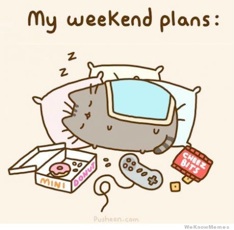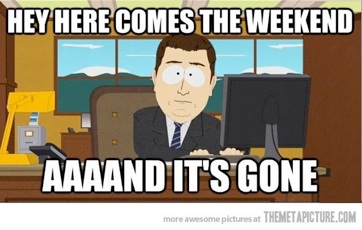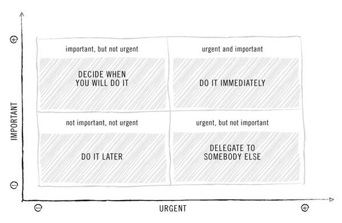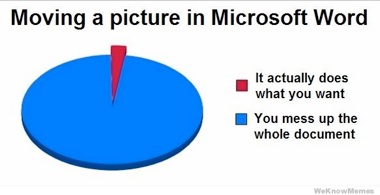Comfortable to Hesitate
Waiting in the hope for something to happen or apprehending to act upon something, which undermines our own level of contentment and general actionability over the degree of control of the persons, places, or things that occur around us. In essence, we let the elements that comprise the experience through which we perceive the world to slip from our grasp and relinquish control. We let the girl walk past, never “get around” to the New Year’s Resolutions we firmly promised to ourselves, never get in touch with that friend because we’re too busy or think we can always do it later, avoid raising the issue of a raise or promotion at the office, all of which create the circumstances for falling through that ultimately originate from our own hesitancy to act.
The crux of the problem is that this hesitancy is self-caused — and we are all guilty of it. I certainly am just as culpable, if not more than anyone else. After a long week at the office, I often hesitate on the weekend to do anything more than stay in my apartment and consume copious amounts of media.


This continued hesitancy restricts what we end up doing. In effect, we are bound by our own limitations that we impose upon ourselves. These ostensible boundaries that we believe (or have been taught) to be the determinants of our present and future standing in society are related to or are direct human constructs, which often times are in place to serve a specific purpose. As evidenced throughout human history, there have always existed power schemes, societal structures, and a myriad of rules exercised by top-down force and enforced through a combination of carrot-stick rewards/punishments by the privileged nobility unto the peasantry.

This feudalistic elite-proletariat system in many respects persists to this day in a variety of shapes and forms that have been adapted to the 21st century: economic inequality converging to plutocracies; ethnic/religious exclusion & conflict, pillaging of the state’s coffers by corrupt & tyrannical regimes; industrial military complex systems curtailing decision-making checks & balances; sensationalist media distracting popular discourse & interests of the majority; influential lobby groups representing powerful minority agendas; multinationals/high finance engaged in rent-seeking activity to extract value without any reciprocated contribution; myopic short-term performance for evaluating management; rising student debt for graduates forced to take on lower wages; rigid intellectual property right litigation for unwarranted profits that hinder innovation & cost lives; and a consumerism-driven economic model predicated on fossil fuels that is inherently & fundamentally unsustainable; to highlight several examples of these contemporary feudalistic-like occurrences.
These man-made constructs do exist and are daunting. They may even serve as reassurances to remain in our state of comfortable hesitation. Why do anything if the status quo will “reign king?” And as I know firsthand, one is certainly able to ubiquitously fabricate excuses — there always does seem to be any number of preventive barriers that we may place before ourselves in order to avoid partaking in a certain action or event. We justify our behavior with convincing rationalizations for why we choose to stay in our comfort zone. However, the unintended consequence is living a life rife with excuses and missed opportunities. The status quo is maintained, the questions remained unanswered, and nothing is challenged both personally or in external circumstances.
To counteract this hesitancy, I have personally benefited from applying several techniques and methods for time management and productivity (admittedly a painful work in progress) that can be generally useful for many:
The 2-Minute Rule
If a task takes less than two minutes to accomplish and it is important, then do it now. This rule was vividly exemplified in one of my classes in Toulouse Business School — the professor asked what should be the action plan for a manager’s daily workload from a selected case study. Contrary to what most of the class answered — by importance, relevance, etc. — and contrary to my own intuition, the most optimal route is often in order of time duration required.
“The 2–Minute Rule works for big goals as well as small goals because of the inertia of life. Once you start doing something, it’s easier to continue doing it. (lifehack.org)”
The Do Something Principle
In the same manner as the 2-minute rule, the do something principle is about rethinking how we view the psychology behind human behavior as it relates to motivation. The “Inspiration -> Motivation -> Action” model is not entirely accurate as it overly relies on somehow sourcing from inspiration to sufficiently motivate oneself to accomplish extremely daunting outcomes. It’s not always easy to bring oneself to paint an entire house or hang up all of the Christmas lights in one attempt. The do something principle draws itself from the concept that motivation is actually a virtuous cycle based on actions that in turn sustain momentum for further inspiration and action. Paint one side of the house first, hang up one string of lights at a time each day for a week; you’ll feel better and continue to slowly progress.
Thus, the model is interdependent and non-linear, more precisely portrayed as “Action <-> Inspiration <-> Motivation,” which continues into an indefinite loop. As written in the recommendable MarkManson blog: “Action isn’t just the effect of motivation, but also the cause of it.”
“The conclusion is that if you lack the motivation to make an important change in your life, then do something, anything really, and then harness the reaction to that action as a way to begin motivating yourself.”
The Eisenhower Matrix
This matrix is an extension of the “2-minute rule” in how to approach and/or delegate assignments.

The upper-right quadrant represents the “2-minute rule” — do something now as it is important and urgent. Get it out of the way. If something remains urgent but is less essential, delegate it to someone else if possible (bottom-right quadrant). The upper-left quadrant is for those tasks that are important but not due immediately, those undertakings that fall over the “2-minute rule.” Lastly, for the unimportant and not pressing, postpone to a later date (bottom-left quadrant).
The Pareto Principle (80/20 rule)
The Pareto Principle defines a phenomenon that holds true in an array of situations (natural, business, social, scientific, etc.) where “roughly 80% of the effects come from 20% of the causes.” From an individual’s perspective, this translates into focusing on the 20% of responsibilities that yield 80% of the results. Otherwise said, focus on the significant few as opposed to the trivial many. As a perfectionist, I have struggled to keep this in mind as I sometimes use more time on the 80% of effort for 20% of the results. I can spend an eternity calibrating graphs and adjusting the paragraph properties of a document, which may be discarded in a moment’s notice by a superior rather arbitrarily.

It may be true that the devil is in the details — I even had a boss demand that I reprint an entire spreadsheet because a dash between the time and date was missing in the top-right header (in my defense, the text was so small that it was illegible). Indeed, sometimes we become too fixated on the details, and it is worthwhile to bear in mind the bigger picture of what is the targeted output. In other words, the Pareto Principle prompts one with the following inquiry: what are we trying to accomplish and what few things can I do now to advance toward that goal?
Quantifying
We live in a world where the scientific method is paramount in conducting experiments to acquire new verifiable knowledge or to correct fallacies of the past. Statistics help anchor us to different shortcuts for estimating other unknowns. Track records are apparent in everything from GPAs, mutual fund performances, tennis player rankings, to measuring donor aid effectiveness. This also holds true to our own lives. When a marathon runner sets out to beat their personal best time, they know exactly what their best run was to the second. In the era of big data, we increasingly possess the tools to quantify phenomena. Quantifying encompasses establishing a baseline, determining metrics, measuring, analyzing, and finally seeking out ways to improve the impact (source).
This quantifying takes the form of effective planning and doing to deter hesitation. This involves linking the “to do list” into quantifiable component parts. Concrete terms over abstract ideas. On this subject, the waitbutwhy blog is brilliant, particularly with the personification of what constitutes procrastination (synonymous to “hesitating”) in two highly recommendable pieces (part 1, part 2). In a nutshell, the rational decision-maker is distracted by the instant gratification monkey that wants to be entertained at all times (“me me me, now now now” — not too unlike my generation of today). We only act once the panic monster (stress) rears its ugly head to force us to finish the deliverables in time.
The takeaway is to internalize that everything we do is a choice, to fight against instant gratification, and to strive for slow and steady progress. The key line of the reads is:
“A remarkable, glorious achievement is just what a long series of unremarkable, unglorious tasks looks like from far away.”
So to recap: all of us to a certain extent encounter the problem of comfortably hesitating (I am on the higher end of the distribution curve undoubtedly). The existing societal frameworks may easily dissuade us from trying to actualize our goals, but this mindset begets excuses, wasted chances, and raises the risk of future regret.
There are several time management techniques that can combat against such hesitation to do those things that we would like to do: the 2-minute rule to do things now; the do something principle to initiate the positive feedback loop for further motivation and inspiration; the Eisenhower matrix for determining how to appropriately act, delegate, or postpone; and quantifying metrics to best judge how to progress in a piecemeal manner.
With all of that said, I’ll conclude with several phrases in mind:
“It is more sensible to spend the energy focusing on the solution rather than worrying about the problem.” – Dalai Lama
“In three words I can sum up everything I’ve learned about life: it goes on.” – Robert Frost
If you never try, you can never know. Trying and knowing is better than always wondering what should/could/would have been.




